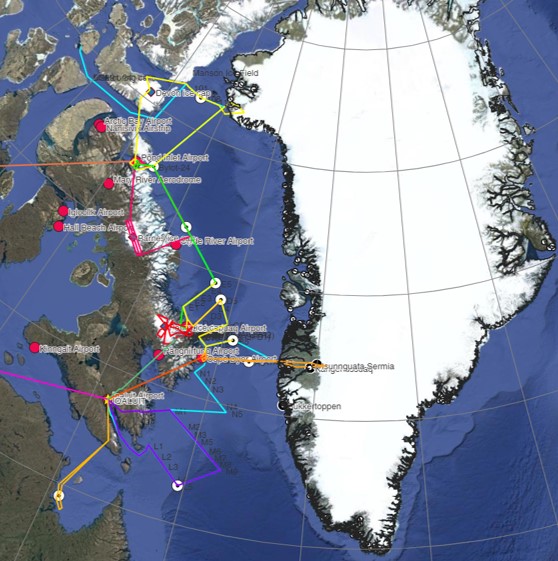CryoS4 campaign
Low-frequency Ultra-Wide Band radiometry is a novel approach in the remote sensing of Earth surface. It is based on the collection of finely-resoluted spectral data in the lower part of the microwave spectrum. Some of the main reasons behind this approach, insted of collecting Tb in traditional channels, are:
- at frequency < 1GHz (i.e. L-band) electromagnetic frequencies can penetrate deep in the ice. It is assumed that frequency ~500 MHz can reach the bottom of the ice sheet in the Antartic plateau;
- at CryoRad frequencies, 400-2000 MHz, the shape of the spectrum can provide valuable information beside the Tb magnitude (e.g. it can provide information on the wet/dry basal state of ice sheet);
- for some targets, e.g. sea surface salinity, the maximum sensitivity of Tb is obtained for frequencies outsides the traditional protected bands. CryoRad overcomes this limitation collecting Tb over its entire operational range;
- CryoRad operates over non protected spectrum bands. This means that the natural spectrum is contaminated by man-made emission over anthropized regions. However, polar regions are inhabited thus their e.m. emission is almost clean. Any case, the collection of Tb measurements with a fine spectral resolution, i.e. <= 1 MHz, allows for the detection of radio frequency interferences and the subsequent data cancellation.
To date, UWB brightness temperatures have been collected by UWBRAD over Greenland, Antarctica, and the North Pole. The targets of these campaigns were sea ice and ice sheets.
Sea Surface Salinity is one of the most elusive targets in polar regions given the limited sensitivity of Tb to the parameter.
In order to support CryoRad phase 0 studies, ESA funded an airborne campaign aimed at exploring the potential of UWB radiometry for SSS studies. The CryoS4 campaign (CryoRad Survey for Sea Surface Salinity) will take place at Baffin Bay on 17-28 August 2025 and will survey open oceans as well as ice caps, rocks and sea ice. The campaign will survey the same route of the 2025 Amundsen expedition that will collect data of sea water all along its journey. The updates flight routes can be found here.
